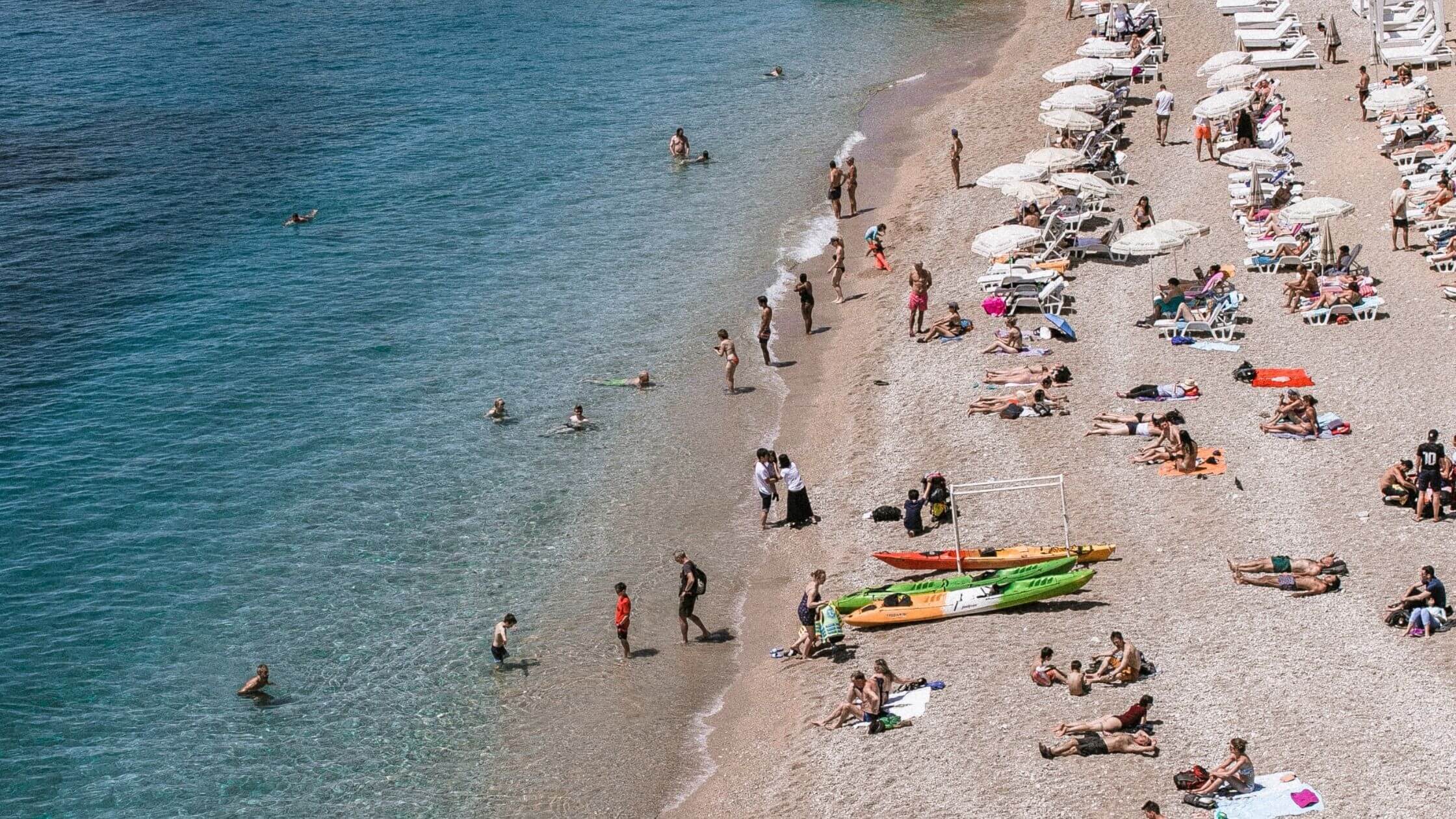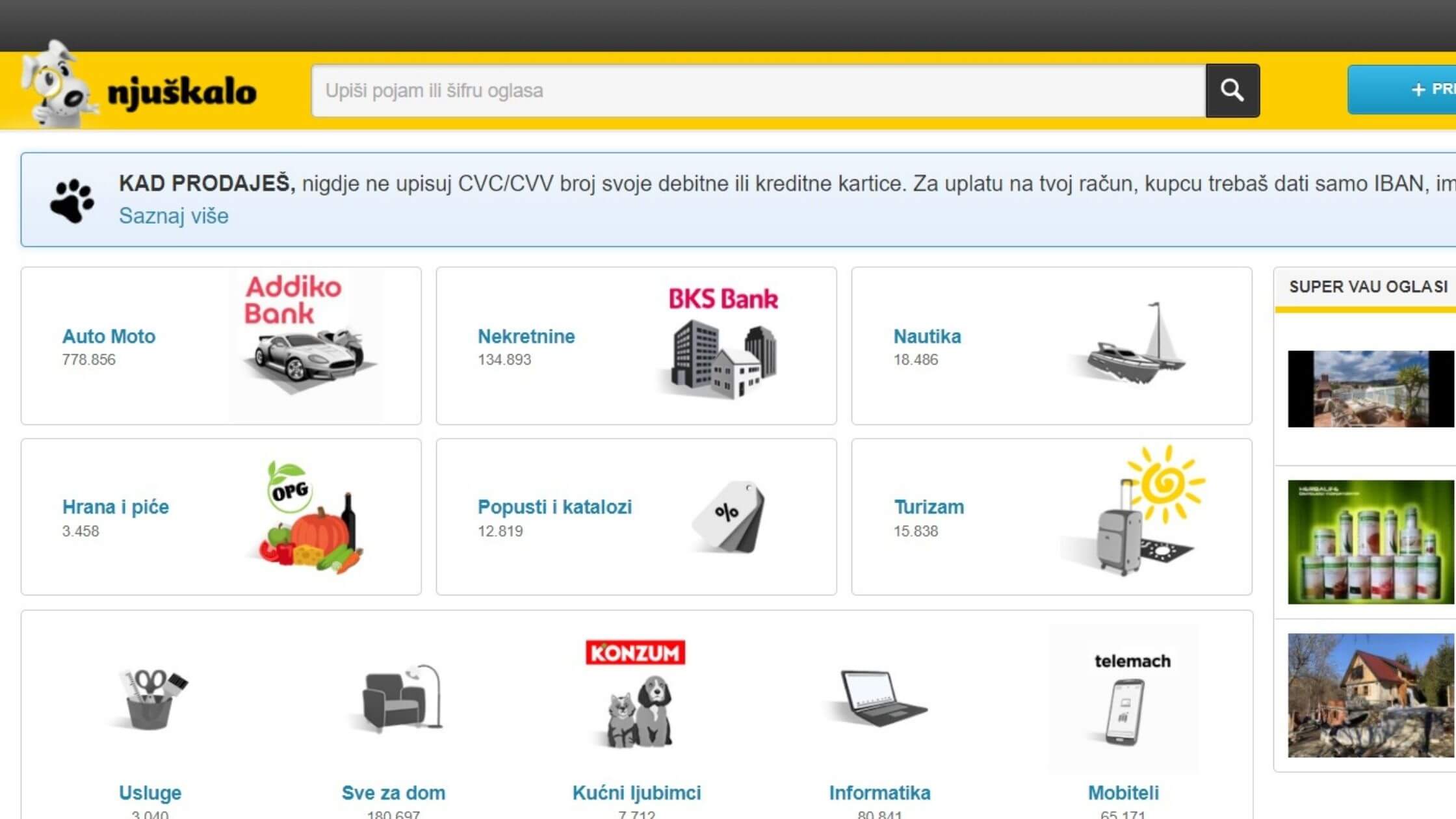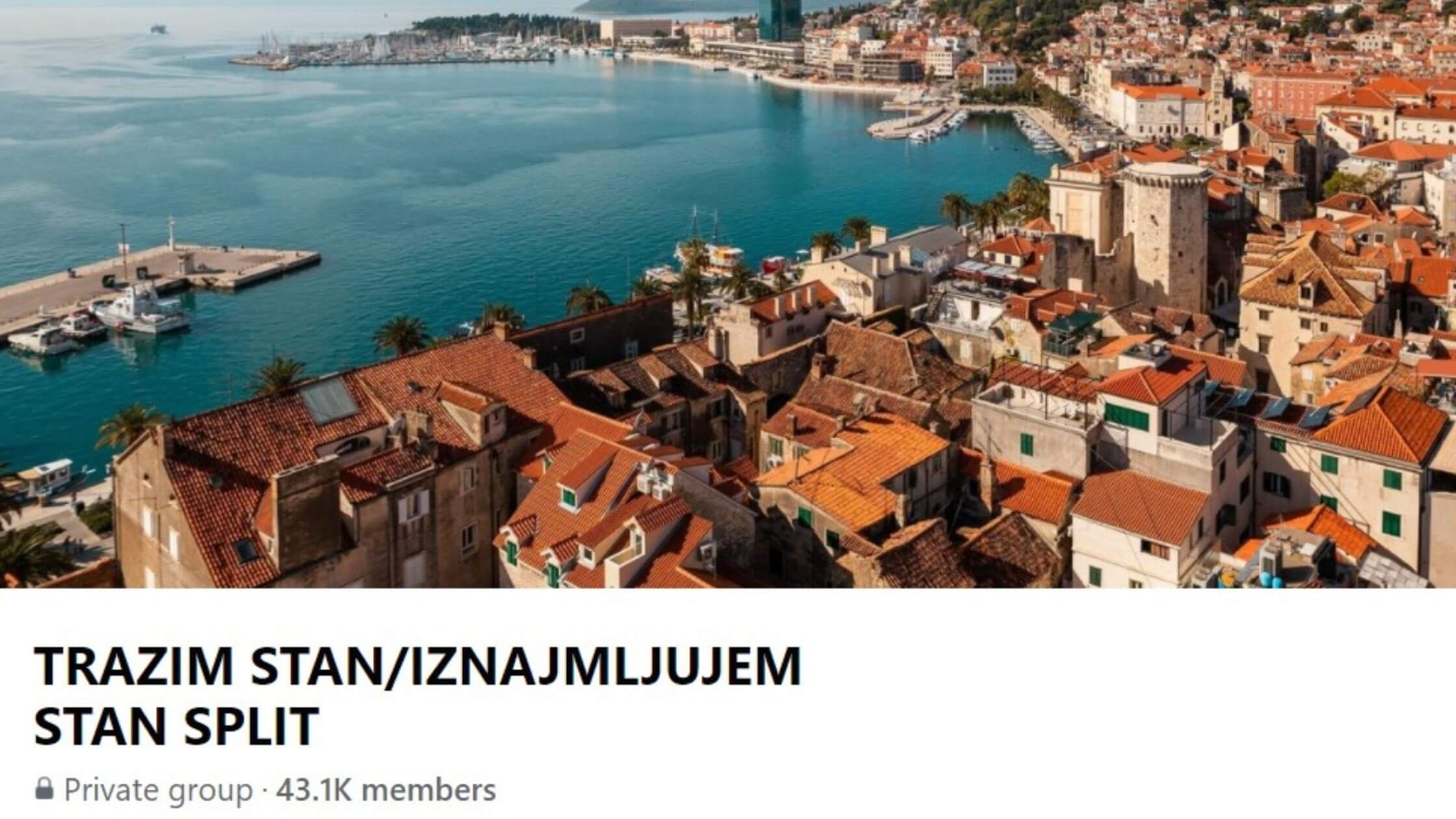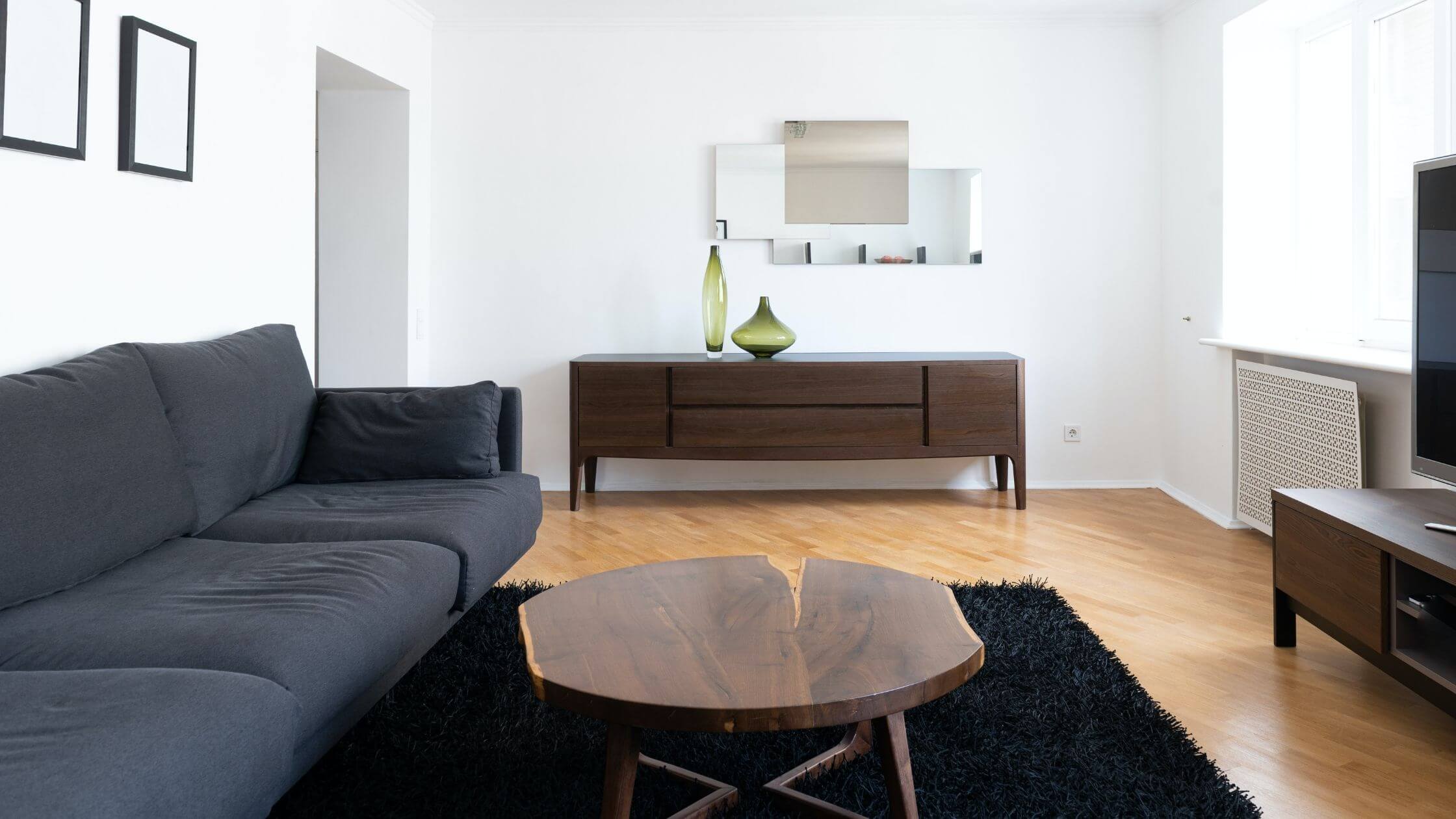Accommodation in Croatian Luxury Villas in 2023 20% More Expensive
February the 15th, 2023 - Croatian luxury villas are always in demand, but staying in them this year will typically see you forking out as much as 20 percent more.
As Marija Crnjak/Poslovni Dnevnik writes, bookings for Croatian luxury villas (in reference to short-term rentals for tourism) have been in full swing since December 2022, despite prices being about 20 percent higher than they were last year owing to continued inflationary pressures. Rather unsurprisingly, the Austrians are the most numerous guests of all in this luxury segment, the British are also making a strong comeback, while Croatia's most faithful visitors, the Germans, are opting for Greece in larger than usual numbers this year.
Bookings from outside of Europe and from distant destinations are also growing, as evidenced by the agency My Luxoria, one of the three largest agencies specialising in the rental of Croatian luxury villas and other sorts of holiday homes. My Luxoria boasts more than 700 Croatian luxury villas in its portfolio, and annually they bring about 20,000 guests to the Republic of Croatia, most of which have considerably higher purchasing power (read: deeper pockets).
Ankica Caleta, the owner and director of the My Luxoria agency, revealed that half of the booked accommodation they've secured so far this year is for stays of seven nights, the Germans stay on holiday the longest on average, around ten days, and guests stay in Istria the longest of all Croatian regions.
Istria and Kvarner are mostly being booked by Germans and Austrians. Europeans who fly by plane, such as from the UK, more often choose to land at Split Airport and then head to their accommodation in various Dalmatian villas. In this segment too, seasonality is still a problem, because most catering and hospitality establishments, attractions and other entertainment facilities are still closed.
"Guests who book the most luxurious homes in which to stay while they're here have nowhere to spend their money outside of their accommodation facilities at this time of year, and it is up to us to respond to that demand in order to retain guests within the elite tourism segment," says Caleta.
For more, make sure to check out our dedicated news section.
Long-term Accommodation in Croatia: An Introductory Guide
18 March 2022 - If you are a digital nomad, visitor, or resident, long-term accommodation in Croatia can be notoriously difficult to nail down. Here are some ways to help with your search for long-term accommodation, as well as some additional advice on what you can come to expect in the Croatian rental market.
Are long-term rentals even available? Why are they so difficult to find?
Croatia is a tourism heavy country, making up almost 20% of its GDP with the trend continuing to increase year-on-year. As such, tourism has heavily influenced the real estate industry throughout Croatia, especially for cities along the coast where short-term tourist rentals are often a significant source of income for locals.
This may explain why certain ads for rentals often stipulate a move-in period after September, but a firm move-out date by 1st June/July, in time for the peak tourism season. After all, revenues from tourist season rentals are often equal, if not more, than what landlords are able to make from a year-long rental.

In 2019, almost 1.5 million tourists visited the city of Dubrovnik. Image: Pexels.
For example, a landlord may charge €400/month for a two-bedroom, 50 square meter apartment during the ‘off-peak’ season, but will easily be able to charge the same amount per week during the tourist season.
Taking this example further, during the 4 months of ‘peak’ season (June-September), the same landlord can, in the best-case scenario, make a maximum of €6,400 (€400/week X 16 weeks) which is more than if they charged €400/month for the entire year (€4,800).
Another possible reason for the lack of longer-term options may be that prior to the introduction of the digital nomad visa, there were limited avenues for non-Croatian residents to reside long-term. This would make the long-term rental market softer and less prevalent compared to tourist rentals.
What types of accommodation are available for long-term rentals?
Options 1 and 2 are fairly typical, while number 3 may be novel to some.
1. Standalone house or villas - These are quite self-explanatory although villas tend to come with a pool. Though I have personally come across houses and villas for long-term rent, they have been few and far between.
2. Apartments in an apartment building - Similar to blocks of condos or flats that are clustered together within a compound. These types of apartments can commonly be found for rent starting at around €350/month for a one-bedroom apartment in Split during off-peak season.
3. Apartment in family house - These are essentially 3-4 story houses where each floor is its own self-contained apartment with separate entrances. Typically, families of different generations will live together, albeit on different floors. Since more Croatians have left over the years, more such apartments are available for long-term rent.
Where is the best place to look for long-term accommodation?
1. Bookmark Njuškalo as one of your go-to sites and ideally, your first point of reference. The site is a local version of craigslist or eBay, where you are literally able to find anything and everything from domestic produce, to used cars, clothes, and multi-million euro villas for sale. You’d want to focus on the real estate section (nekretnine) for rent (iznajmljivanje).
A heads-up, if you rent a place through a real estate agent (they are often behind the ads on this site), you as the renter have to pay for their services, not the landlord. The price tag for their services is often one month's rent, so if you’ve found an apartment to rent for €450/month, you’ll have to pay the agent a service fee of €450.

Your first port of call. Image: Njuškalo.com/screenshot
2. Facebook groups/marketplace are another excellent source for long-term rental accommodations. Try searching for groups in your city of choice with keywords like “trazim/iznajmljivanje stan/kuće” (looking for an apartment/house for rent).
While there may be fewer options compared to Njuskalo, you will more likely be able to work around the real estate agent’s fees by renting directly from a landlord.

An example from a social media group based in Split, Croatia. Image: Facebook.com/screenshot
3. Through sites such as Booking.com and Airbnb. Although I have yet to experience this myself, some have managed to negotiate a long-term stay with their landlords after booking short-term accommodation from one of these sites.
There is no harm in trying to work something out if you’ve enjoyed your stay and are looking to extend it longer-term, but I would advise against relying on this strategy since the priority for most landlords is still short-term tourist rentals.
What else do I have to be aware of when renting in Croatia?
Before signing on the dotted line, clarify if your monthly rent includes amenities such as water, electricity, and internet. If you’re renting an apartment in a family house, there should be separate water and electricity meters for each apartment where you pay for your own usage.
For a couple with a 70 square-meter apartment in Split, you can expect to pay about €10/month for water, €30/month for internet, and €80/month for electricity. The exact breakdown of electricity prices can be found on the HEP website.
Most rental apartments tend to be furnished and if not, will include larger appliances such as refrigerators, stoves, TVs, beds, and washing machines, so a damage deposit of 1-month’s rent is standard.

Fully furnished apartments are common here. Image: Pexels.
Once you’ve decided on a place, ensure that your landlord prepares a rental contract for your stay and if possible, have it notarized. Though few and far between, there have been horror stories of landlords kicking long-term tenants out during tourist season, so you’ll find more security with a rental agreement. You’ll also need the notarized copy of the contract for your Croatian paperwork.
Some landlords may also insist that you pay your monthly rent in cash. This can be inconvenient since you will have to figure out how to withdraw large sums of money without incurring heavy fees and conversion rates. If this happens, try to negotiate a bank transfer but if this fails, look into opening a multi-currency bank account with a local, or online bank.
For more, check out our dedicated lifestyle section.
Number of Tourists in Commercial Accommodation in June Up 72 Percent
ZAGREB, 13 Aug 2021 - Croatia's commercial accommodation facilities in June reported 72% more tourists and 82% more overnights than in the same month of 2020, however the numbers are still not at the level of 2019, notably when it comes to foreign tourists, according to data provided by the national statistical office (DZS).
Commercial accommodation facilities reported a total of 1.37 million tourists in June 2021, and they generated 6.5 million overnights.
In June 2021, there were 1.1 million foreign guests in commercial accommodation facilities, or 50.6% more than in June 2020, and they generated 5.6 million overnight stays, or 81% more on the year.
Domestic guests generated 275,200 arrivals and 854,300 overnight stays, the numbers increasing by 76.2% and 87% respectively y-o-y.
In the first six months of 2021, there were 771,700 domestic guests in commercial accommodation facilities or 77.3% more than in H1 2020. They generated nearly two million overnights, up 82.2% on the year.
In the same period, foreign tourists made 1.5 million arrivals, up 50%, and 7.5 million overnights, up 82.3%.
Most foreign tourists were from Germany, Slovenia, Austria, Poland and the Czech Republic.
For more news,CLICK HERE.
First ''Scientific Destination'' in Croatia Being Constructed in Zagorje
The Zagorje castle, with a welcome 126 million kuna in investment, is becoming a tourist attraction.
As Bernard Ivezic/Poslovni Dnevnik writes on the 26th of March, 2019, in beautiful Zagorje, the very first scientific destination in Croatia is being built. Krapina-Zagorje County has launched a public tender for the architectural solution for the reconstruction of the castle and gardens of Stubički Golubovec.
This old Zagorje gem is otherwise one of the best preserved Croatian castles and the place in which this year's Seljačka buna will be held will be transformed into a "scientific centre". This is a new type of institution for Croatia, one that unites the functions of the museum, an entertainment park, and the innovation centre for the popularisation of science.
The county is planning to move the Science Educational and Entertainment Centre (ZEZ) to the castle's grounds. This is the same project that was supported by the City of Zagreb six years ago, it was ready to invest 200 million kuna into the project, transforming the castle into an Italian pavilion at the Zagreb Fair, but after much talk, nothing happened. A likely story.
Krapina-Zagorje County announced the plans for the creation of the centre last year, in addition, it has also announced the first tender for the beginning of its eventual realisation. The tender is a somewhat modest one, worth 1.5 million kuna, but is an introduction to an eventual investment which is currently estimated at a massive 126 million kuna.
A similar centre exists in Finland, Heureka near Helsinki, attracting an average of 280,000 visitors per year, it has become the most popular recreational destination in the country. In 2012, the AHHAA Science Centre in Estonia (with more than 500,000 visitors) was the strongest tourist attraction in that country, too. This new addition to Croatia could bring fruit, and a lot of it.
The are more and more similar institutions popping up in Europe. If this move in Croatia manages to see the numbers Finland saw, it would mean that ZEZ would exceed the number of visitors to Dubrovnik and its museums, which according to MDC's data on visits to Croatian museums in 2017, came in fourth place. With half a million visitors to the science centre in Estonia, ZEZ would become the most visited cultural destination in Croatia, overtaking the incredible Pula Arena (486,966 visitors), Diocletian's Cellars in Split (357,745) and Klović's Palace in Zagreb (314,767 visitors).
Željko Kolar, Krapina-Zagorje County's prefect, says that when taking into account examples from other countries and cities across Europe, the opening of the ZEZ Zagorje Centre represents a great development potential.
"Krapina-Zagorje County, Donja Stubica and the ZEZ cooperative, as partners in the project, realised that there's a need to popularise science and education in Croatia, and that the establishment of a scientific educational and entertainment centre would provide a good basis for that very popularisation of science and education, scientific institutions, and the economy, supporting entrepreneurship and directing young people towards science,'' stated Kolar.
He added that they are entering the modernisation project slowly because they want to preserve the rich cultural heritage of the castle and the gardens.
Davor Komerički, ZEZ's initiator, says he is now finally satisfied with the pace at which things are moving. He pointed out that the gross value of the project stands at 126 million kuna, and 85 percent can be funded from EU funds.
"We've been developing this project for a long time, and we started it in 2010, and when the EU evaluated projects that Croatia could apply for EU funds for before the accession of Croatia [to the EU], our project was one of the 20 best rated ones. We were in the eighth place out of all of the projects from Croatia,'' Komerički noted.
He also stated that their aim is to prepare the necessary documentation by September in order to retrieve the aforementioned funds. "If everything goes to plan, in two years Zagorje's ZEZ centre will be open in the castle," Komerički said.
According to the currently available data, Zagorje's ZEZ centre will occupy 5,000 square metres, of which 3,200 will be in the castle area itself. An additional space of 1,800 square metres will be built next to it. There will also be a science park with exhibits in an arboretum of 5,000 square metres. The centre itself will have as many as 30 different facilities.
"The goal is to be self-sustainable, both energetically and financially. In addition to being a great tourist bait for Zagorje, it's located just 200 metres from the section of road that connects Zagreb with Stubičke Toplice,'' Komerički said.
"Krapina-Zagorje County is the best continental destination of 2018, and with this project we'll further develop our tourism offer, of the county and of the entire region,'' Željko Kolar added, stating that he expects a major impact of the centre on both tourism and the economy in Krapina-Zagorje.
Make sure to follow our dedicated lifestyle page for much more.
Click here for the original article by Bernard Ivezic for Poslovni Dnevnik


